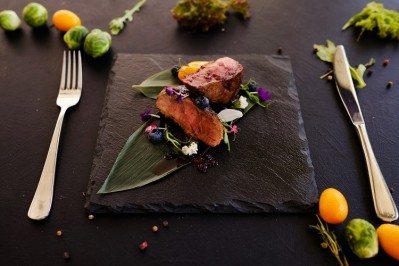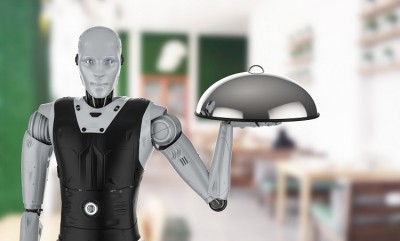What food is this? How senses inform pitch-dark restaurant experiences

Food is not just about taste and texture. Sight is also a vital aspect of how we taste, and how food appears can have a drastic affect on how we experience it. Sometimes seeing is not knowing, and often consumers will not know what food they are looking at.
A new study in the journal Appetite suggests that communication is also central to building up our understanding of what food is and how we see it. Communication and its centrality to social interaction, contrary to the belief that senses such as taste are ultimately private and personal, is an integral part of developing perceptions of foods, it suggests.
The study posits that senses such as taste and sight are embedded within social interaction, and that such interactions help make sense of the taste and texture of foods, especially when they are unknown.
Dark restaurants: What happens when sight is restricted while eating?
Consumers use senses to work out what food they are eating. When this is restricted, the normal associations with said food may not be present.
Some restaurants restrict consumer ability to see a food by putting them in total pitch darkness.
Creating colour through fermentation
Colour is one of the most important aspects of food, as it can change consumer perception significantly, including taste. Traditional methods include creating a dye out of insects, but several new start-ups have been developing vegan colour through fermentation.
When one does not understand what food one is eating, the study posits, the action of eating shifts to tasting, and the consumer uses their taste buds to enquire into the food’s nature rather than simply devouring it.
The study analysed responses to food in a dark restaurant, which serves ordinary food items but keeps these items mysterious by shrouding consumers in darkness, via ten hours of audio recordings. The restaurant in question, in German-speaking Switzerland, served its patrons in pitch-black while they were administered to by visually impaired serving staff.
The question ‘what is this?’ emerged not only at the beginning of the recording but at various points during the meal. In fact, the study comments, it in many occasions took precedence over actually eating the food.
The participants, through communication, were often quickly able to ascertain what they were eating through agreement. For example, upon one participant suggesting a meal that they were eating was a tomato, the others agreed. When first making guesses as to what they are eating, participants would display some trepidation (saying things such as ‘I think so,’) before this was confirmed more assertively by others. Participants would also narrow down their food into categories to help each other guess, for example on temperature.
Food packaging for the blind and partially sighted
Knowing food ingredients is vital for anyone. For blind and partially sighted people, reading the ingredients list is usually not an option, so they must use different methods, such as tech, to ascertain what a food contains. Recent research, however, has suggested that many blind and partially sighted people feel that the industry has failed to provide them with these.
The researchers also noted other occasions when participants would challenge each other on their assertions, meaning that they would not always come to an agreement straight away.
There were even occasions when guessing the food was not pursued in a group but unilaterally, with participants coming to conclusions by themselves, and revising their conclusions without any intervention from other participants.
Unknown food: What happens when knowledge is restricted while eating?
The social context within which one eats food affects how they respond to said food, the study posits. For example, on a tasting panel or in a high-end restaurant one is expected to describe a food in depth, whereas at an ordinary dinner one may simply make noises (such as “mmmm”) to express their pleasure.
The study also analysed video recordings of an upscale restaurant in France, where patrons who were not used to such places tried to work out what foods were included in the creative cuisine they were eating. In this context they were eating deconstructed food, which were conventional dishes taken apart and with their texture, shape and temperature changed but flavour enhanced. This cuisine was developed by the Spanish chef Ferran Adrià, inspired by the philosopher Jaques Derrida.
In this context, patrons do not have their sense restricted, but they are restricted in understanding by the way the food in question has been visually changed beyond recognition.
Despite having sight, patrons were often still unable to ascertain what they were eating, frequently asking ‘what is this?’ They would frequently ask each other to identify various components of the meal that appeared to them sometimes as so unidentifiable as to only be identified by colour (one participant asks ‘what is this yellow?’) Even after seeing a food item, participants would often remain uncertain as to what it was.
Sourced From: Appetite
'“What is this?”: Multisensorial explorations of food with and without sight'
Published on: 5 June 2024
Doi: https://doi.org/10.1016/j.appet.2024.107530
Authors: P. Hänggi, L. Mondada


















